“We didn’t know what was going to happen…the volcano began to explode little by little.”
Recalls Jose Correia da Silva, a survivor of the 7 ½ month long eruption of Capelinhos.
“The first explosions there were, [and] the wind was throwing the sands to the sea…and brought it here to use over the island. And it started burning everything…”
said Jose, describing the towering cloud of ash and stone that spewed off the Western end of Faial Island as earthquakes racked its interior and houses collapsed under black rock and ash.
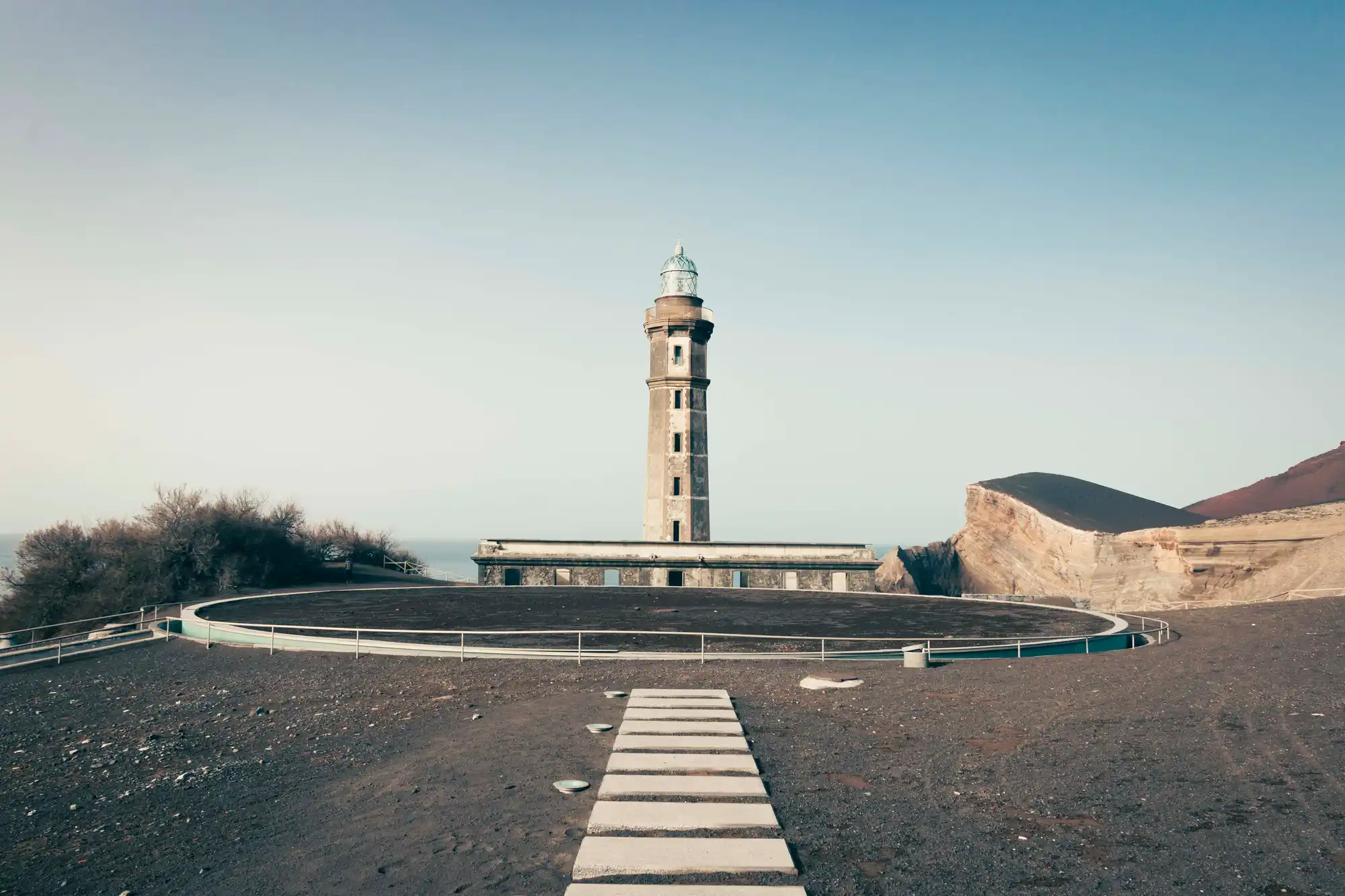
It was the birth of virgin land, a whole 2.4 square km in the middle of the Atlantic Ocean, 1,700km from Europe and 3,400km from North America.
As Kaelin and I explored the Azores Islands, we hopped from the largest island of Sao Miguel to the smaller and less populated Faial island, home to coast-line farmland and several calderas displaying the islands volcanic history of life near the triple junction of the North-American, Eurasian and Nubia plates.
Despite its small size at only 173 square km, There are several notable and historic features that made us choose this island to visit over the other 8 islands of the Azores territories, one being the Capelinhos Lighthouse. Here is our story.
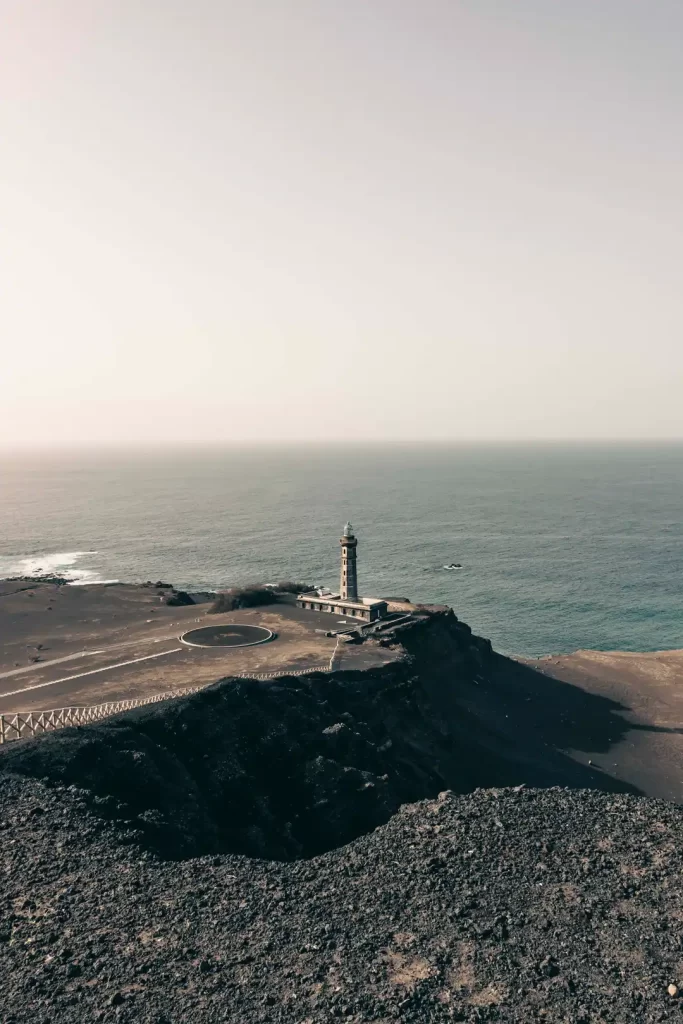
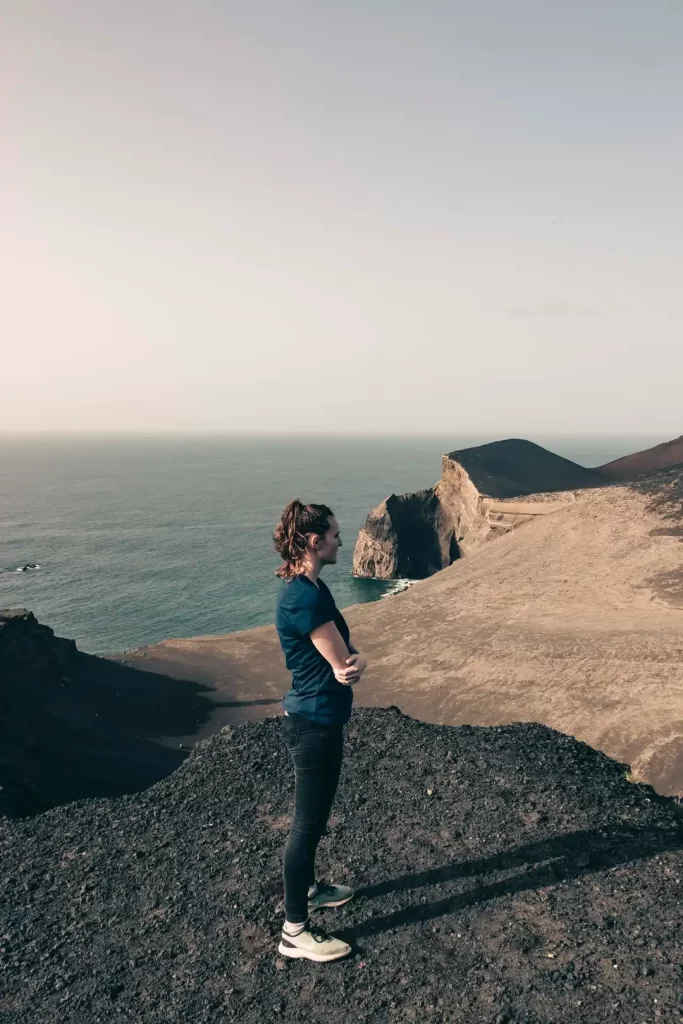
It was barren and brown. Bricks and mortar lay scattered underneath the weathered ash. As if the volcanic torch remained in the earth, even the trees were brown and barkless, their smooth trunks writhing out of the ground; branches clawing at the sky in agony. A reminder of the blaze and brimstone which fell across the island just over half a century ago.
Boasting its monotone brown hues and empty landscape, what gives this place such an unusual flair is the Lighthouse of Ponta dos Capelinhos, originally situated on the island’s shoreline, but now appearing to be an architectural mistake.
The day began at our Airbnb near Horta. The morning sun warmed up the grapevines outside the patio door, as chickens began their daily scavenge around the hillside. Mt Pico loomed on the horizon, commanding peace across the small farmyard.
After a quick bite of egg-and-muffin sandwich, we hopped in our stickshift rental, clutched our way out the near vertical driveway, and reversed-geared onto the small island streets. We passed colored houses ranging across high saturated hues, local market centers sitting snug along cobbled streets, and countless blind turns and curves with fish-eye mirrors set for the purpose of avoiding head-on collisions.

Even though we started off on the East side of Faial, it took less than 30 minutes to reach the Lighthouse. The change of landscape as we approached was drastic; what once was teaming with wildlife and green pastures, the land was now choked of its spirit, all tree, brush and dirt barren of organic passion.
Sea gulls dotted the skyline between us and the 70-year old peninsula, miniscule specks that elevated the majestic proportions between earth and man. Even grander was the infinite horizon line that stretched across the canvas of vision, the endless motion of the Atlantic Ocean reminding us of just how far away we are from the 20+ years of memories and communities we were a part of.

I slowly walked along the stone pavers that led to the lighthouse. Built in 1894, Ponta dos Capelinhos endured 7 months of the 1957 eruption. What was initially thought of as a large pod of whales in the sea, became a towering plume of ash and stones which crashed through the roof and buried the lighthouse and the coast 7m deep.
During this time, over 1,500 Azoreans fled to America to seek refuge. Then president of the United States, John F. Kennedy, established a direct flight from Boston to Sao Miguel Island as a response to any follow up refugees (and is still active today). Out of the estimated 1.3 million Portuguese-Americans currently living in America, over half of them reported to be of Azorean descent.
The eruption, which lasted for 13 months, caused the nearby town of Capelo to evacuate and created a 150m cone that blocked the 360-view of the lighthouse, forcing it to discontinue shortly after the eruption began. Today, it serves as an interpretive center for the Capelinhos eruption.
As I approached the historic monument, I noticed the permanent recoloring of the bricks from original whitewash to ash-toned sandy yellow. Compared to its surroundings, I wondered at how this simple structure survived in such close proximity to ground zero. It is as if the lighthouse serves as the volcano’s trophy for a spectacular display of power; left to stand like a Roman arch signifying geological victory.

After snapping a few pictures, Kaelin and I slowly made our way towards the coast, a gradual slope in the sand dotted with leafless bushes and petrified tree limbs. Jagged rock lined the edge of the island, the bare floor of magma rock created one generation ago. The pale brown landscape gave off a haze that spread in the air and across the ocean, muting the deep blues of sky and water.
We were in the landscape, enveloped in a dry haze, as if part of the scene; a memoir of the undulating earth below us.
We wanted to walk on the newly created cone, but an apparent “do not enter” sign (I am translating here, it was in Portuguese) made us think twice. I noticed an older couple walking back on the cone, raising my doubts of any supervision by the lighthouse staff. But they quickly disappeared from view, making me think it was just a hallucination of my rebellious mind.
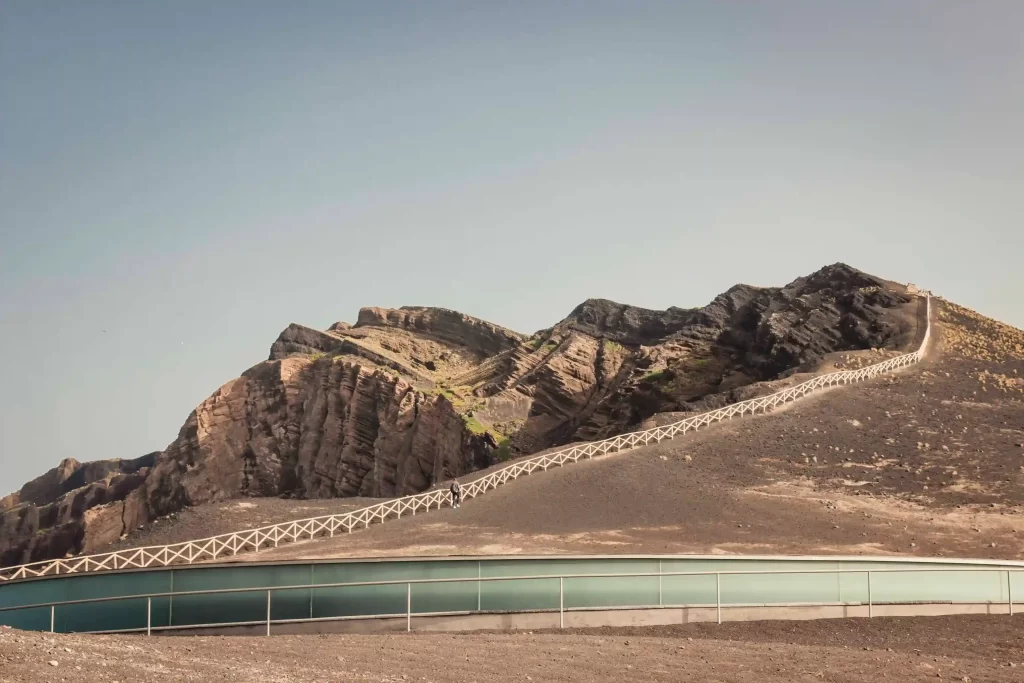
To satisfy our wandering souls, we made our way back to the parking lot and towards a path that led up a hill that originally served as the coastline. A cream white rail fence lined the edge of the trail as we slowly climbed higher and higher above the lighthouse and cone.
Further away from the eruption, the landscape was an unusual mixture of long grass along the cliff edge and large scree towards the interior. Seagulls clamored in larger numbers as we reached a rolling top. My Geocaching habit kicked in and I convinced Kaelin to venture off the trail towards the cliff’s edge, looking for a small black container.
Some of the seagulls voiced their concerns loudly at our presence in their traditional meeting spot. They swooped over our heads and around the water below. The GPS took me almost too close to the 60 foot dropoff, far from the path and deep in seagull territory. After signing my name on the cache logbook, I backtracked to a more peaceful location near what appeared to be a lookout point (vigias) that was used by whale-watchers to notify fishing boats of large pods.

I scanned the vast horizon before me, imagining what it was like to be a 19th century whaler. Standing in the strong breeze, hair whipping across my face. My eyes peeled over the ocean, looking for any signs of spyhopping or blows. The chatter of seagulls mixed with the deep tones of the ocean waves crashing against the cliffs hundreds of feet below.
The current Azorean culture didn’t seem far off from its ~600 years old history, with many of the current residents still practicing some of the traditional roles of their great-great-great-grandparents.
It was a natural and realistic lifestyle given the location and reality of geography. Isolated from more than 99% of the global population, Azoreans seem to be a people unconcerned with life outside their territory, satisfied with their community and way of life.
Despite the prevalent spamming of social media geotags and top 10 blog posts, (such as the methods used here on this post, wink wink), Azores somehow maintains its secrecy under the radar. While a growing community of expats claim Azores as their final destination, (mostly retired Europeans) and a comfortable percentage of the YouTube search terms displayed for Azores is mostly expat and property related, the culture seems untouched.
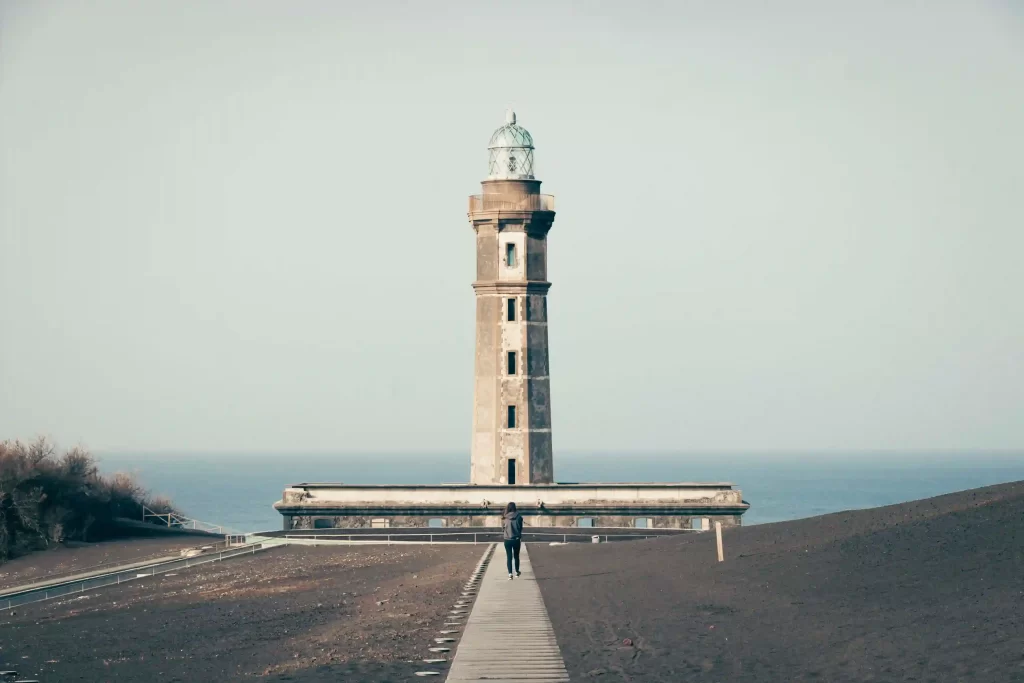
Capelinhos is a great place to explore and learn about the volcanic side of the Azores, a natural artifact of the wonderful power of the earth below us.
Azores is a sleeping giant; a violent past now tamed to sleep with rolling pastures, ocean waves and dairy cows.
Siaram Sentir e interpretar o ambiente dos Acores
Smithsonian Institution National Museum of Natural History Global Volcanism Program
Geochemistry of Volcanic Rocks from Faial Island (Azores)
Cole, P.D., Guest, J.E., Duncan, A.M. et al. Capelinhos 1957–1958, Faial, Azores: deposits formed by an emergent surtseyan eruption. Bull Volcanol 63, 204–220 (2001). https://doi.org/10.1007/s004450100136
Latest images of Fayal volcano (Classified as active)
Molon Labe